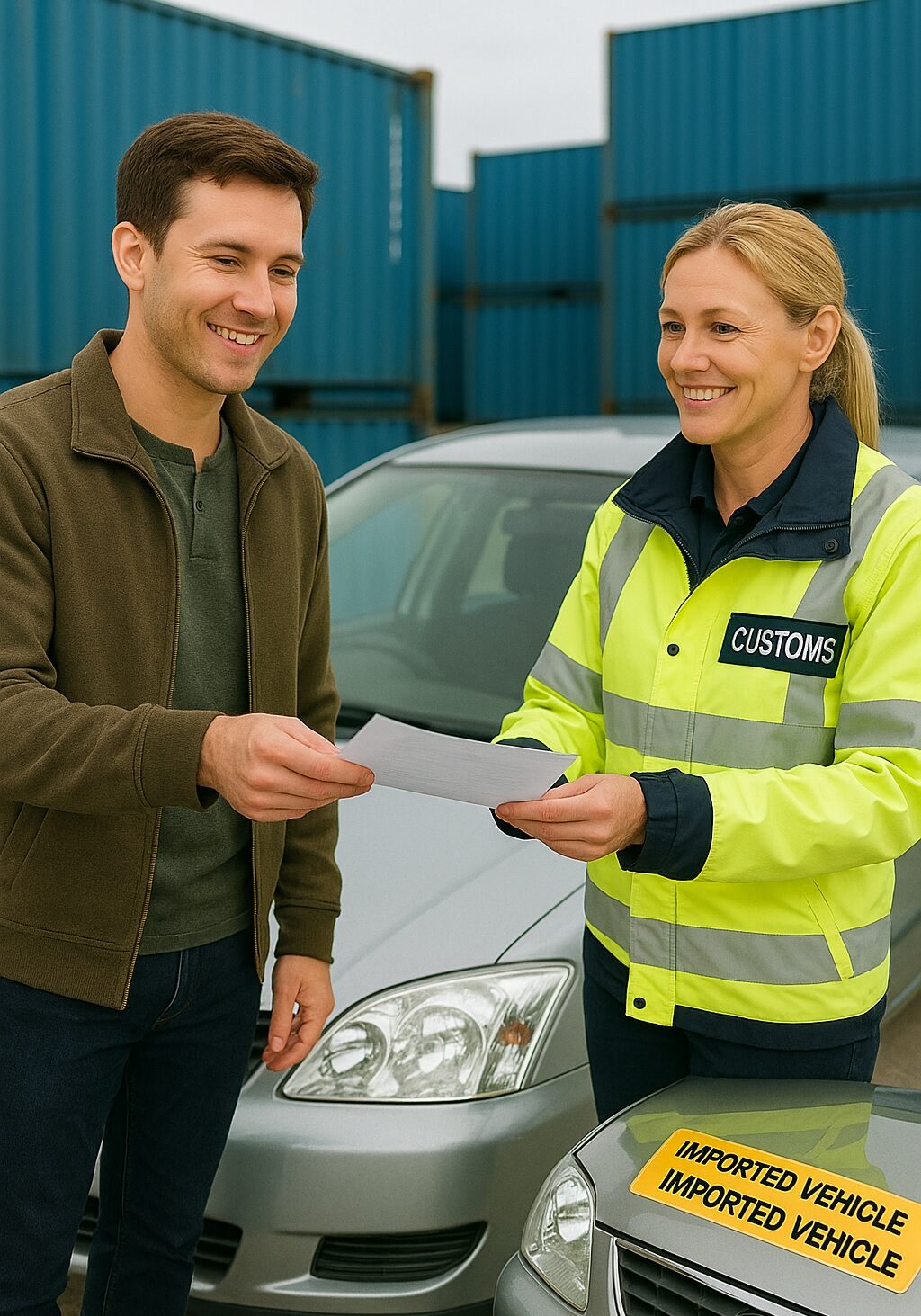
How to Scrap an Imported Vehicle in the UK
20th Aug, 2025
Bringing a car into the UK can be exciting, but parting ways with it isn’t always as straightforward. Imported vehicles carry extra layers of rules, from DVLA registration details to emissions compliance. That means the process of scrapping them isn’t identical to scrapping any car.
Whether the vehicle came from Europe, Asia, or further overseas, owners often find themselves juggling unusual paperwork, different technical standards, and questions about what to do next. Getting it wrong could delay the DVLA recognising the car has been taken off the road. Getting it right ensures a clean break, proper recycling, and peace of mind.
Scrap Car Network works with Authorised Treatment Facilities across the country to make sure imported vehicles are dismantled safely, legally, and in line with environmental standards.
Why Scrapping Imported Vehicles Needs Extra Care
Imported cars don’t just carry a different badge or trim level; they often come with their own quirks. Some may not meet UK emissions standards, while others have paperwork that doesn’t match DVLA formats. For example:
- Paperwork challenges: A vehicle shipped from Japan might have its own export certificate, which needs to be cross-checked before scrapping.
- Parts and compliance: An American import could include components that don’t meet UK emissions rules, meaning extra recycling measures.
- Registration differences: If the car never completed DVLA registration, it cannot legally be scrapped until that step is resolved.
This is where using an Authorised Treatment Facility (ATF) becomes critical. Only ATFs can issue a Certificate of Destruction, confirming the car has been processed correctly. Choosing the right partner ensures everything is handled without hassle, including imported car recycling.
Step 1: Confirm the Vehicle’s DVLA Status
Before an imported vehicle can be scrapped, its registration details must line up with DVLA requirements. This includes:
- Checking whether the car has been fully registered in the UK.
- Completing a V55/5 form if the vehicle was never registered locally.
- Providing proof of import, such as customs clearance or foreign logbooks.
Getting this part wrong means the DVLA may not recognise that the car has been taken off the road. Once records are updated, the scrapping process can move forward smoothly.
If you’re not sure whether your paperwork is in order, you can also check out resources like the DVLA ownership change process for clarity.
Step 2: Choose a Licensed ATF
Every scrap vehicle in the UK, imported or not, must go through an Authorised Treatment Facility. These facilities strip valuable parts, recycle metals, and dispose of hazardous waste such as oils and batteries. For imports, this is even more important because some parts may not be compliant with UK safety or environmental rules.
Scrap Car Network connects vehicle owners directly with licensed ATFs, making the process simple. This matters whether the focus is on scrapping car imports that never made it onto UK roads or recycling vehicles that have been driven here for years.
Step 3: Gather the Right Documents
Imported cars require more than just a UK logbook. Depending on the origin, you may need to supply:
- The V5C registration certificate (if available).
- The original foreign registration documents.
- Customs clearance paperwork.
- Certificates confirming emissions compliance.
Missing paperwork is one of the biggest obstacles to scrapping car imports. Having these documents ready ensures the process doesn’t stall.
Step 4: Arrange Collection or Drop-Off
Not every imported car can be driven to an ATF. Some may fail MOT standards, while others could still be stuck on temporary plates. Scrap Car Network provides a scrap car collection service, making it easy to arrange pick-up across the UK.
This service helps when the car:
- Cannot legally be driven.
- Is located far from the nearest ATF.
- Needs to be moved on a specific date to meet deadlines.
Once collected, the vehicle is safely transported to an authorised facility for processing.
Step 5: Receive a Certificate of Destruction
The final stage is the issue of a Certificate of Destruction (CoD). This proves the vehicle has been scrapped and removes any liability for future road tax, insurance, or fines. For imported cars, this confirmation is essential, as it closes the DVLA record once and for all.
Through Scrap Car Network, every CoD comes from an authorised facility, giving you peace of mind that the vehicle’s journey has ended properly.
What Happens to an Imported Vehicle After Scrapping?
Once inside the ATF, the process of car recycling begins:
- Depollution: Hazardous materials such as oils, refrigerants, and batteries are removed.
- Recycling: Metals, plastics, and usable parts are recovered.
- Disposal: Any non-compliant or unsafe components are destroyed in line with UK environmental rules.
This means even vehicles that don’t match UK standards are broken down responsibly, ensuring that no harmful materials end up in landfills.
Why Scrap Car Network Simplifies the Process
Scrapping car imports requires careful handling. Scrap Car Network removes the complexity by:
- Connecting owners to fully licensed ATFs.
- Offering nationwide scrap car collection.
- Ensuring every vehicle is processed with a valid Certificate of Destruction.
- Supporting environmentally responsible imported car recycling.
For owners of larger imported vans or commercial vehicles, the scrap my van service provides the same level of coverage, adapted for bigger builds.
Final Thoughts
Scrapping an imported vehicle can feel like a maze of paperwork and regulations. Yet with the right approach, it becomes a straightforward process that ends with a clean DVLA record and a responsibly recycled vehicle.
Working with Scrap Car Network means every stage, from checking documents to arranging scrap car collection, is handled through a trusted, compliant process. That makes scrapping car imports simpler, safer, and better for the environment.